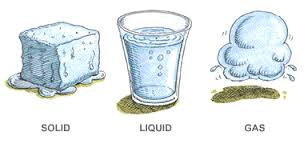I am going to bring closure to my series of very short articles on type conversion functions available in the Transaction SQL (T-SQL) language. One analogy of a data type conversion is apply the correct action to change the physical form of water (H2O). You can convert water to ice by cooling it. You can convert water to vapor by heating it. However, the chemical composition of water is still the same! Information is stored in a database as rows in a table. Each field in a table is defined…
Tag: ISNULL
Conversion Functions – TRY_CAST()
I am going to make headway on my series of articles (tidbits) on type conversion functions available in the Transaction SQL (T-SQL) language. One analogy of a data type conversion is apply the correct action to change the physical form of water (H2O). You can convert water to ice by cooling it. You can convert water to vapor by heating it. However, the chemical composition of water is still the same! Information is stored in a database as rows in a table. Each field in a table is defined with…
Conversion Functions – TRY_CONVERT()
I am going to carry on with my series of articles (tidbits) on type conversion functions available in the Transaction SQL (T-SQL) language. One analogy of a data type conversion is apply the correct action to change the physical form of water (H2O). You can convert water to ice by cooling it. You can convert water to vapor by heating it. However, the chemical composition of water is still the same! Information is stored in a database as rows in a table. Each field in a table is defined with…
Instead of Update
Today, I will be looking at how INSTEAD OF TRIGGERS can be used to make our VIEW correctly work with a UPDATE statement. I will be using the [AUTOS] sample database for this demonstration. The [VW_JOIN_MAKES_2_MODELS] view will be enhanced with a instead of trigger so that update action can be perform on two tables at the same time. The enclosed script has code to perform the following actions in the AUTOS database. 5A – Remove aggregate view 5B – Reload tables with good data 5C – Create a instead…
Instead of Delete
Today, I will be looking at how INSTEAD OF TRIGGERS can be used to make our VIEW correctly work with a DELETE statement. I will be using the [AUTOS] sample database for this demonstration. The [VW_JOIN_MAKES_2_MODELS] view will be enhanced with a instead of trigger so that delete action can be perform on two tables at the same time. The enclosed script has code to perform the following actions in the AUTOS database. 5A – Remove aggregate view 5B – Reload tables with good data 5C – Create a instead…
Searching Stored SQL – Part 4
There are four main database objects that contain stored SQL: VIEWS, TRIGGERS, FUNCTIONS and STORED PROCEDURES. Earlier today, I created a pattern searching tool for FUNCTIONS. I am going to clone and modify the code so that it will work with VIEWS. Again, I want to examine the dynamic SELECT statement that retrieves the user defined stored procedure names from a given database. This is the key element of the whole program. I took the liberty to modify the original code so that it will work standalone. The current code…
Searching Stored SQL – Part 3
There are four main database objects that contain stored SQL: VIEWS, TRIGGERS, FUNCTIONS and STORED PROCEDURES. Yesterday, I created a pattern searching tool for TRIGGERS. Today, I am going to clone and modify the code so that it will work with FUNCTIONS. Again, I want to examine the dynamic SELECT statement that retrieves the user defined stored procedure names from a given database. This is the key element of the whole program. I took the liberty to modify the original code so that it will work standalone. The current code…
Searching Stored SQL – Part 2
There are four main database objects that contain stored (compiled) SQL: VIEWS, TRIGGERS, FUNCTIONS and STORED PROCEDURES. Yesterday, I created a pattern searching tool for SQL code in STORED PROCEDURES. Today, I am going to clone and modify the code so that it will allow pattern searching on TRIGGERS. First, I want to examine the dynamic SELECT statement that retrieves the user defined stored procedure names from a given database. This is the key element of the whole program. I took the liberty to modify the original code so that…
Searching Stored SQL – Part 1
Today, I am going to start building on some the articles I did in the past. We are going to create tools to pattern search stored SQL statements. Four main objects that contain stored SQL are VIEWS, TRIGGERS, FUNCTIONS and STORED PROCEDURES. Recently at work, I was asked to find all SQL code that had a certain business rule. The task is to return all objects that reference to a certain temperature process named T1. One solution to this problem is to buy a tool like SQL Search from Red…
